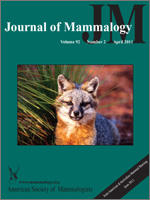African wild dogs (Lycaon pictus) are endangered, having disappeared from many areas where other large carnivore species have persisted. The relative vulnerability of this species has been attributed variously to its disproportionate exposure to anthropogenic threats, limitation by larger competing predators, and Allee effects caused by obligate cooperative breeding. The natural recovery of a wild dog population living on private and community land in northern Kenya provided an opportunity to investigate these potential constraints on population growth. Within a decade the population increased from near-extinction to become the 6th largest in the world. Rates and causes of mortality, and reproductive rates, were similar on community lands, where people and livestock were abundant but competing predators suppressed, and on commercial ranches, where human and livestock densities were lower but competitors more abundant. Larger packs produced larger litters, indicating a component Allee effect. However, because pack size was unrelated to population size, growth of the population was not impeded at low densities; that is, no demographic Allee effect was detectable. These results show that, despite earlier concerns, wild dogs can achieve rapid population recovery, even in a human-dominated landscape. This recovery was probably facilitated by local pastoralist traditions, which combine vigilant herding of livestock with little or no hunting of wild prey. This success might be replicated in other areas where traditional pastoralism is still practiced.
How to translate text using browser tools
15 April 2011
Demography of a recovering African wild dog (Lycaon pictus) population
Rosie Woodroffe
ACCESS THE FULL ARTICLE

Journal of Mammalogy
Vol. 92 • No. 2
April 2011
Vol. 92 • No. 2
April 2011
Allee effect
Community conservation
conservation
cooperative breeding
endangered species
human–wildlife conflict
intraguild predation




